You’re driving through the lanes in the Piacenza countryside, up hill, down dale and past a swathe of vineyards, when suddenly a tiny town of medieval towers and battlements pops up out of the landscape. This is Castell’Arquato, presiding impressively over the Val d’Arda, the easternmost valley in the province (nearly 20 miles from Piacenza).
As you amble through its narrow cobbled alleys, among high arches and squat terraced houses, you notice that it is a town of two halves, separate yet harmonious. One lies at the foot of the slope formed by the medieval quarters of Borghetto and Monteguzzo, while the other bestrides the hilltop around the monumental square, with the Podestà Palace, the Collegiata church and the Visconti Fortress.
Castell’Arquato is one of Italy’s loveliest towns, as its Orange Flag status and membership of I Borghi più Belli d’Italia demonstrate. Come and explore its history and traditions with our guide to what to see, do, eat and drink.
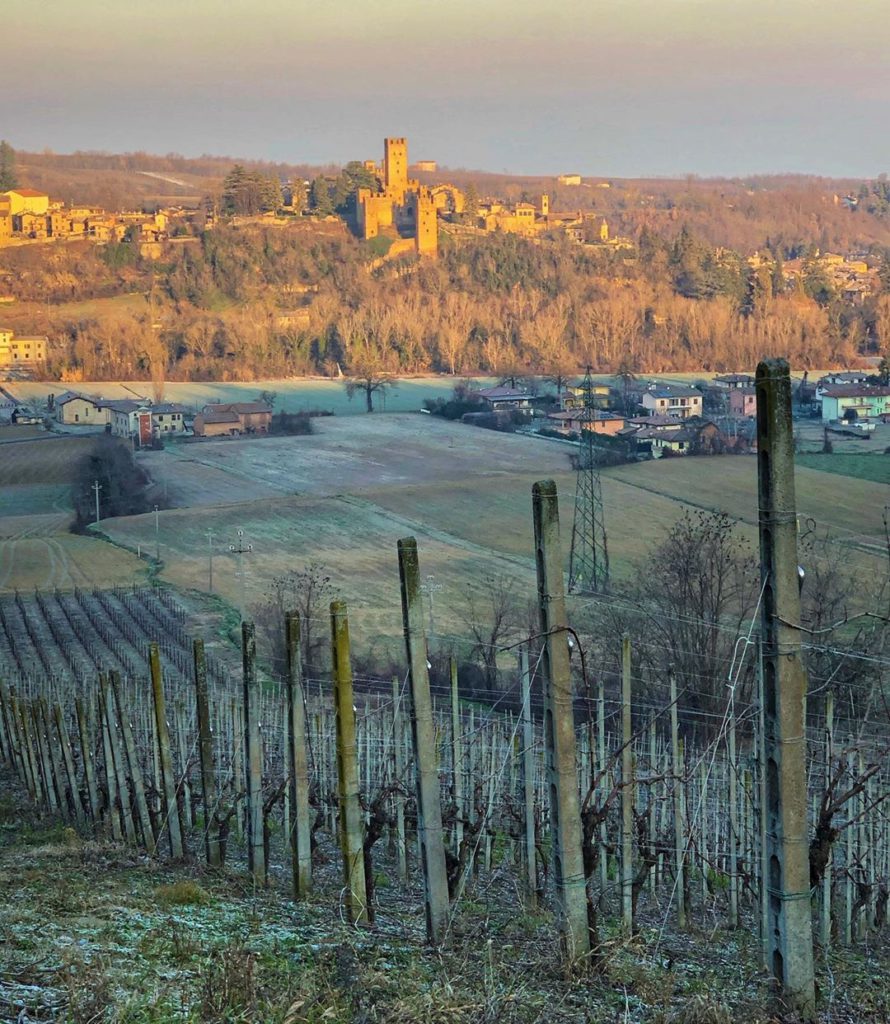
Castell’Arquato @francicore via Instagram
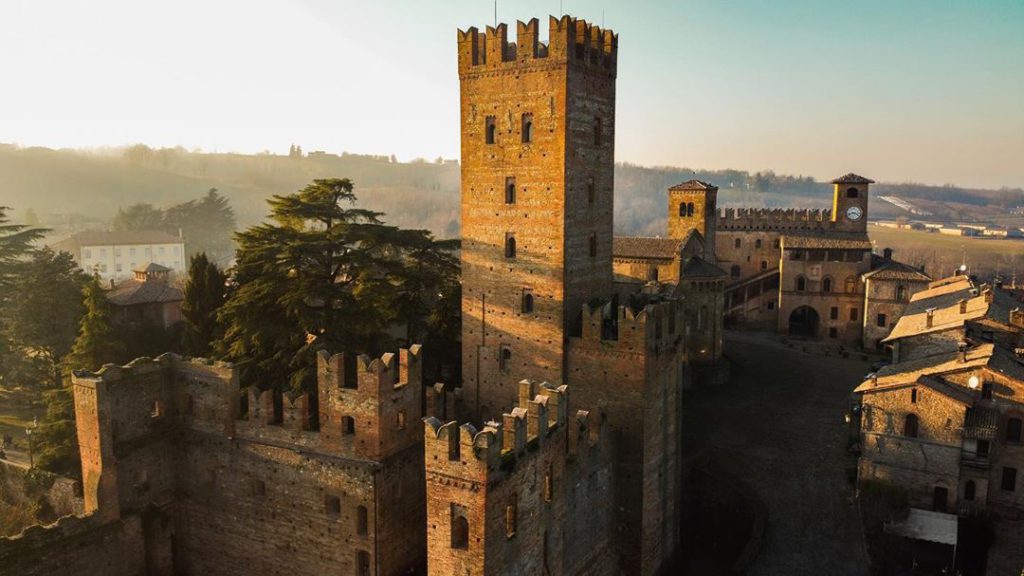
Castell’Arquato @lorenzo_dorazio via Instagram
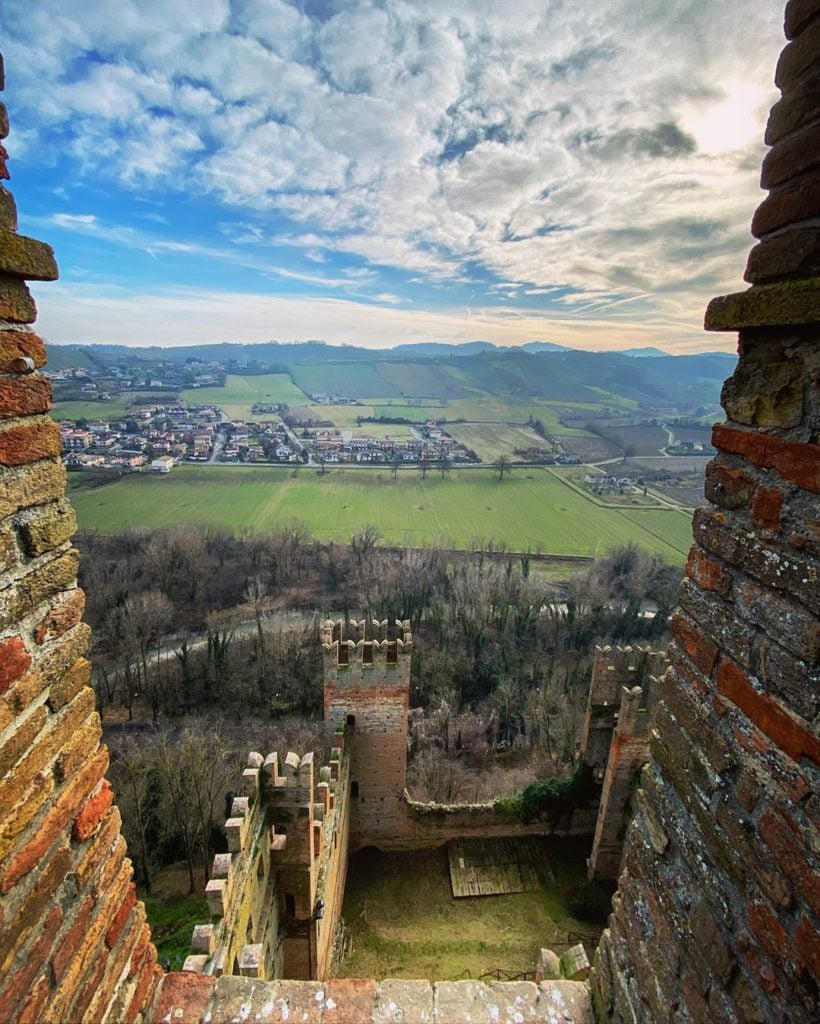
Castell’Arquato @corbetz via Instagram
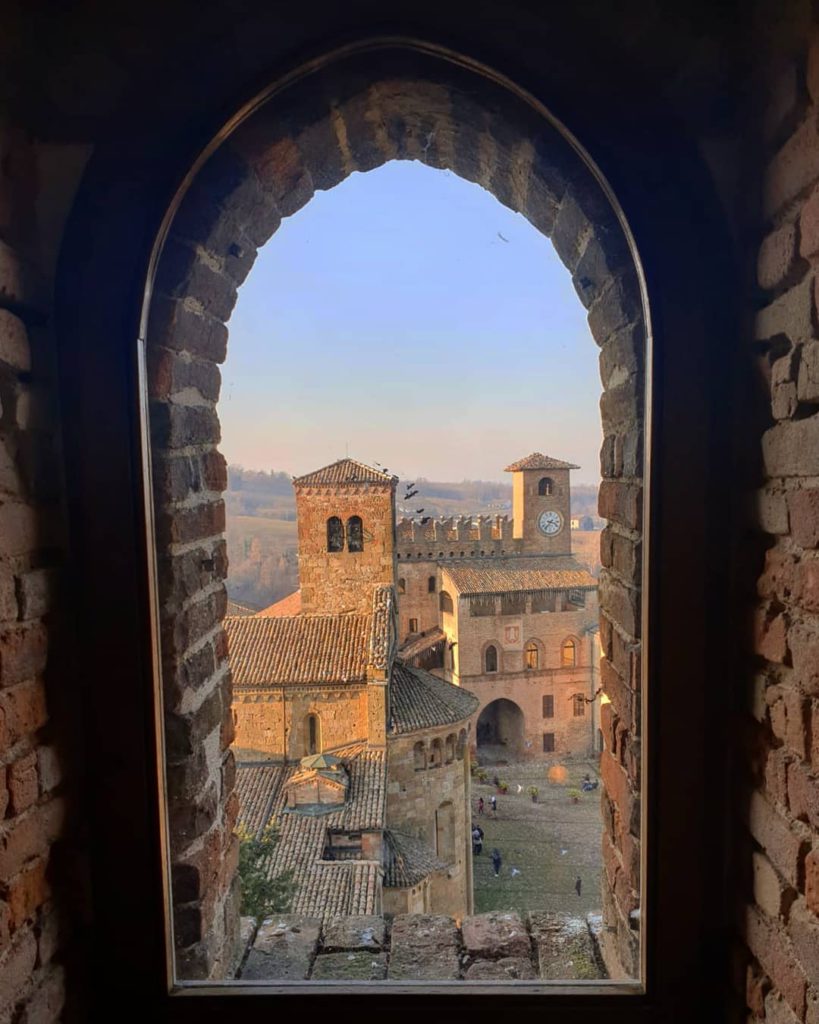
Castell’Arquato @sonobenedetta via Instagram
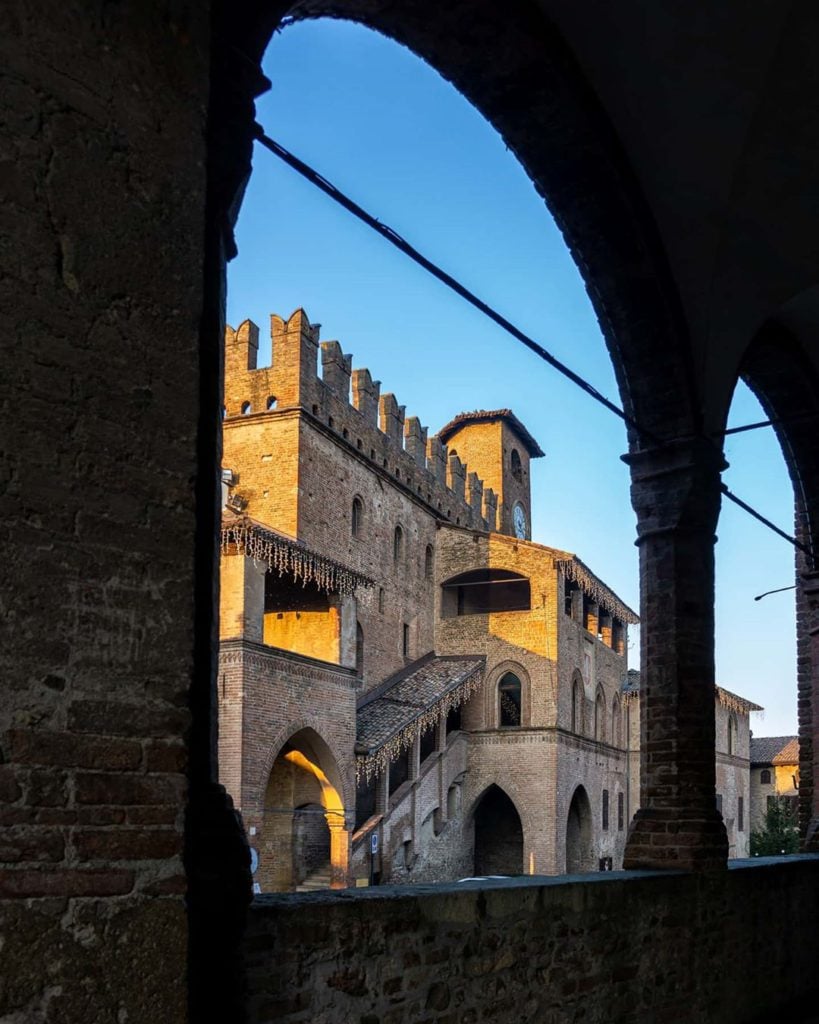
Castell’Arquato @vitali.gianluca via Instagram
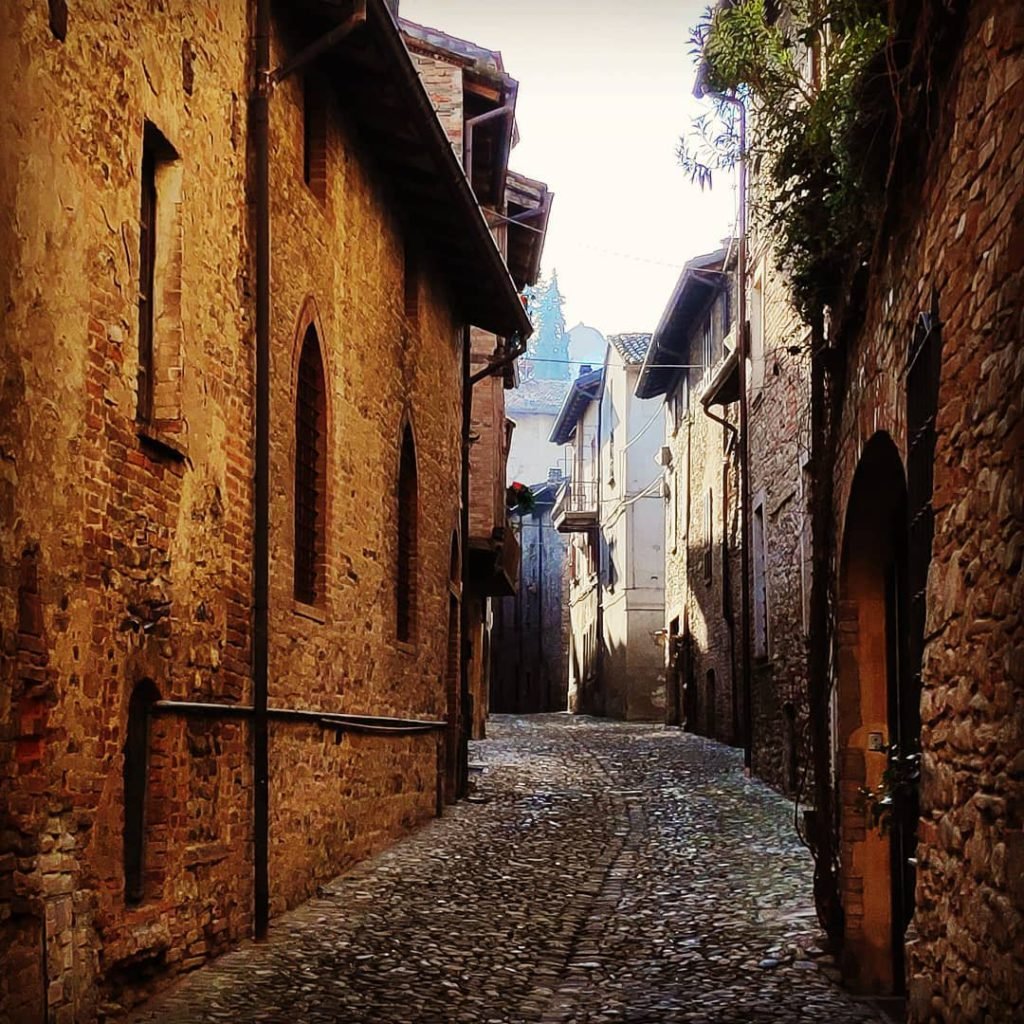
Castell’Arquato @jenaplinsky83 via Instagram
History
Some say that the name Castell’Arquato comes from Caius Torquatus, the Roman patrician who founded the first castrum; others think that it simply derives from castrum quadratum, a description of the castle’s square shape.
Founded in the 2nd century bc as a Roman fortress, the village survived the barbarian invasions but was struck in the mid 6th century by a terrible plague.
The first records of Castell’Arquato as an organised court date back to 756, during the rule of Charlemagne; on his death, control passed to the bishops of Piacenza, who held it until the 13th century.
After a short interlude as a free municipality from 1220 to 1223, the village was ruled by the local Podestà appointed by the municipality of Piacenza from among aristocrats such as the Scotti and Visconti families. After a protracted wrangle for control, the Viscontis finally came out on top, and it was Luchino Visconti who built the fortress that we can still admire today.
The Sforza dynasty took over in 1450 and ruled until 1707, when Castell’Arquato became part of the Duchy of Parma and Piacenza; the new lords, the Farnese family and the Bourbons, held power until the arrival of Napoleon and, later, Marie Louise of Habsburg. In 1860, the duchy was absorbed into the dominion of the Savoy family and then became part of the unified Italian state.
What to see
In upper Castell’Arquato, the Visconti Fortress, built between 1342 and 1349, has a double-walled L-shaped plan. Of the four defensive towers, only the easternmost is still intact. The complex is dominated by the great tower, the Mole del Dongione, which is worth the climb for the Medieval Life Museum inside and for the splendid view over the Val d’Arda.
Next door, the Collegiata is one of the oldest churches in the area: records of it go back to 756, when it was a baptismal church. It was rebuilt after the earthquake of 1117 and consecrated in 1122. On the left side of the church, the 15th-century “Heavenly” portico houses tombs of several illustrious figures.
On the north side of the square stands the Podestà Palace, built in 1292. The oldest part is the rectangular tower, to which other sections were added during the 15th century, such as the Loggetta dei Notari, now the tourist information office. An outer staircase adds visual harmony to the façade.
What to do
To explore the best of the local culture, we recommend a visit to the local museums: the Medieval Life Museum in the Visconti Fortress shows what it was like to live here through the ages and also offers a breathtaking view of the Val d’Arda; the Collegiata Museum has an array of paintings, sculptures, liturgical objects and archaeological finds; the Luigi Illica Museum, right next to the birthplace of the famous librettist, presents a collection of letters, manuscripts, sheet music, stage costumes and personal items; the Giuseppe Cortesi Geological Museum in the former Santo Spirito hospital has a collection of fossils and other finds to take you back to prehistoric times, when the hill where the town now stands was underwater.
There are many opportunities for nature rambles in the Piacenziano Geological Reserve and the Santa Franca Forest. The Val d’Arda area is clad in woodland on the higher ground and in vineyards lower down.
There are some attractive day trips to be had, with the nearby castles at Gropparello and Vigoleno, which, like Castell’Arquato, are part of the Castles of the Duchy of Parma and Piacenza circuit.
Finally, a stop at the municipal winery is a great way to discover the varied local wine production (info and timetables).
Events
Castell’Arquato is a lively little town, and there’s always something going on:
Monterosso Festival | The festival of white wine from Val d’Arda takes place every year in mid April; enjoy a taster at the stalls lining the town streets.
Silver Flag | The vintage car race between Castell’Arquato and Vernasca, dedicated to a different marque every year, takes place in mid June.
Rivivi il Medioevo | Every year during the first weekend of September: medieval jousting, themed markets, archery and food stalls all along the streets and squares of the town.
Food and wine
The traditional local first courses include pisarei e fasò (flour gnocchi in a bean sauce) and tortelli “with the tail” as well as anolini in broth (little pasta shapes filled with grana padano cheese, breadcrumbs and herbs).
While at Castell’Arquato, don’t miss all the PDO cured meats, from coppa (pork shoulder) and pancetta (bacon) to salame piacentino, along with the traditional chisolini (fried gnocchi) or burtleina, a rather delicious fried pancake.
As for wines, Monterosso Valdarda Doc (whence the festival’s name) is produced only in the surrounding valleys and is the local tipple par excellence; a delicate dry white, it’s sublime with risotto or cured meats. The area’s other superb DOC wines include Ortrugo, Malvasia & Sauvignon among the whites, and Gutturnio and Bonarda if you’re partial to a red.
Famous characters
Luigi Illica, a playwright, journalist and one of the most important librettists in the post-Verdi era, was born in Castell’Arquato on 9 May 1857. He worked for various opera giants, including Giacomo Puccini, Alfredo Catalani, Umberto Giordano and Pietro Mascagni.
The [Emilia Romagna Villages] section is dedicated to Villages that are part of the Associations Borghi più belli d’Italia, Bandiere Arancioni del Touring Club & Borghi autentici d’Italia.
Author
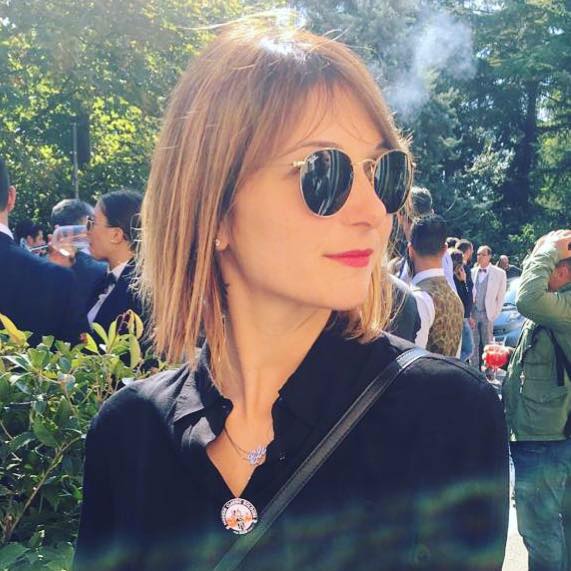
Elisa Mazzini
Social Media Manager for @inEmiliaRomagna and full-time mom.
You may also like
Breathtaking landscapes in Emilia… and where to find them
by Davide Marino /// July 9, 2019
Brugnello: the village for your next weekend
by Celestina Paglia /// May 21, 2018

Interested in our newsletter?
Every first of the month, an email (in Italian) with selected contents and upcoming events.
10 places to amaze children #inEmiliaRomagna
by Elisa Mazzini /// April 6, 2018
The Wines of Emilia
by Walter Manni /// November 14, 2018
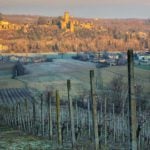
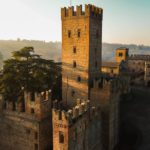
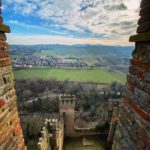
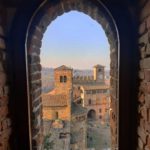
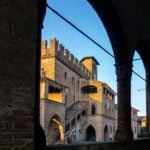
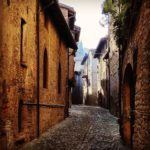
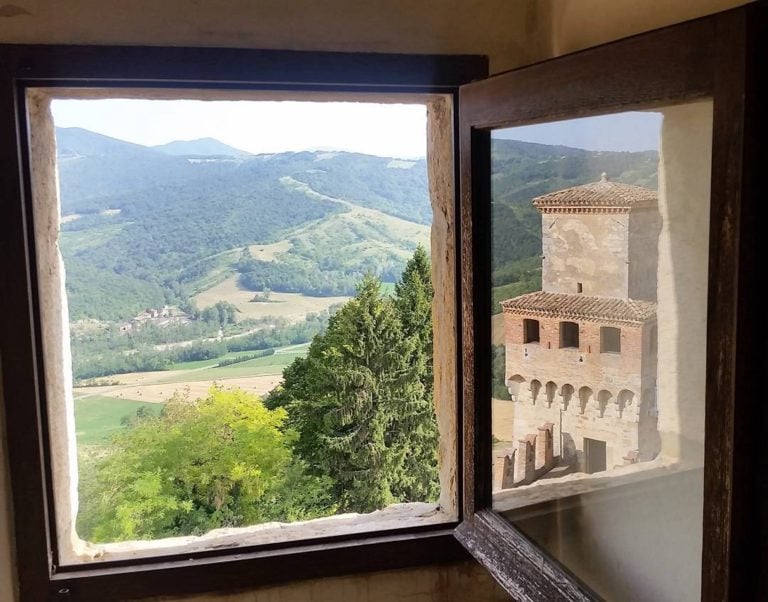
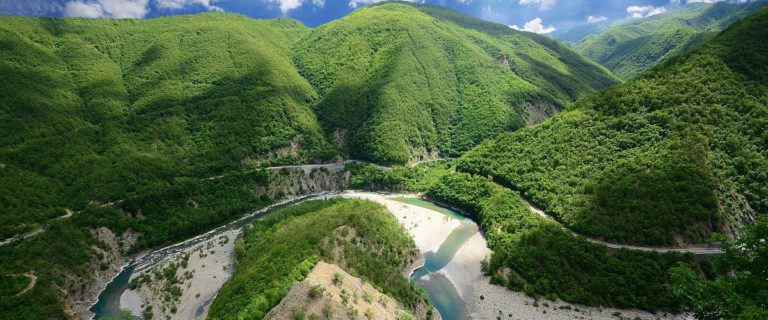
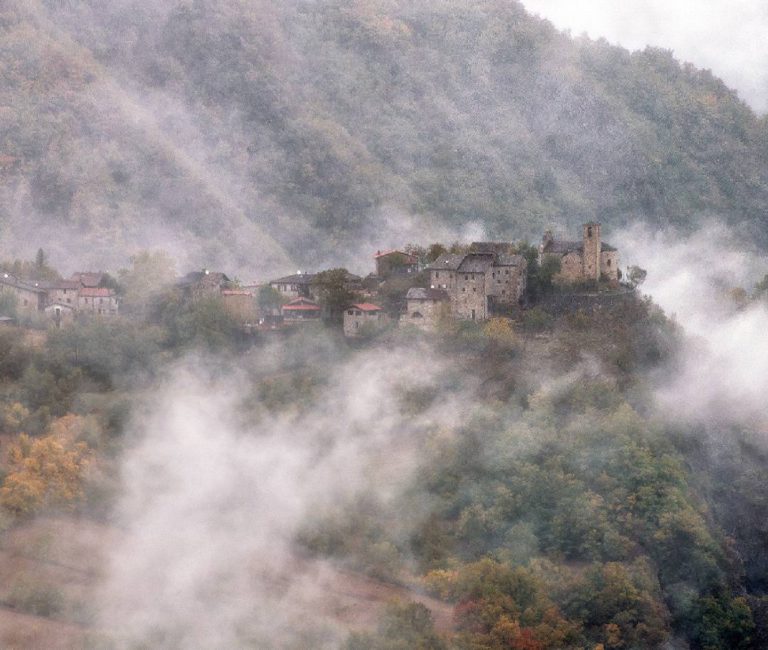

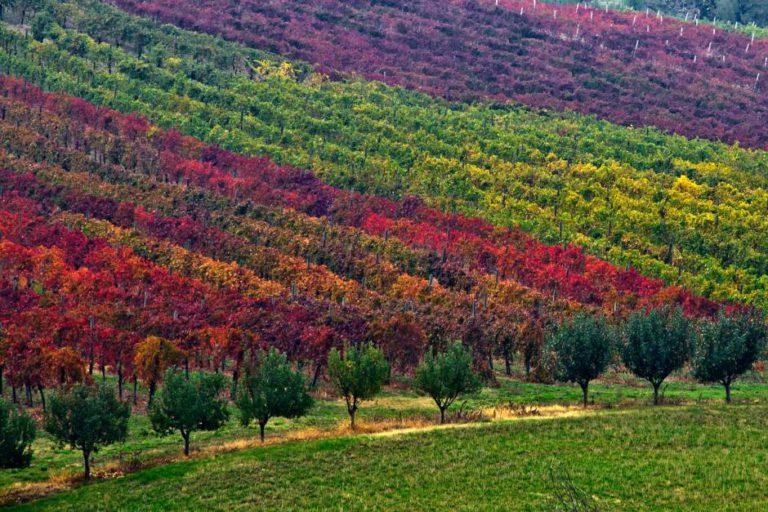
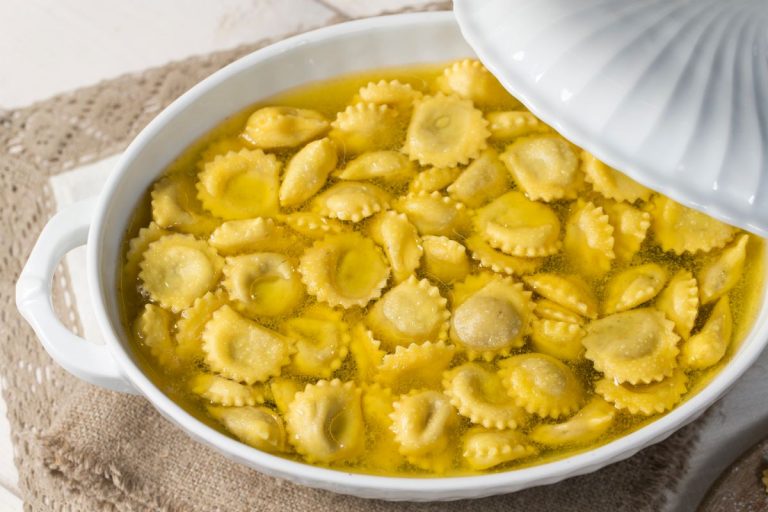
Mike
Hi team. Great information. Could you pls recommend some great villas in the area near Parma, Piacenza. We’d like to visit the many villages you mention in this blog that are near there.
Elisa Mazzini
Hi Mike,
in the area we can recommend you:
Bobbio https://www.travelemiliaromagna.it/en/emilia-romagna-villages-bobbio
Brugnello https://www.travelemiliaromagna.it/en/brugnello-piacenza-village-weekend
Fontanellato https://www.travelemiliaromagna.it/en/emilia-romagna-villages-fontanellato
Vigoleno https://www.travelemiliaromagna.it/en/emilia-romagna-villages-vigoleno
Take a look also at these articles
about the Castles of the Duchy https://www.travelemiliaromagna.it/en/10-castles-of-the-duchy-parma-piacenza
and about the Labyrinth near Fontanellato https://www.travelemiliaromagna.it/en/labyrinths-emilia-romagna
Hope to see you soon #inEmiliaRomagna 😉
Elisa